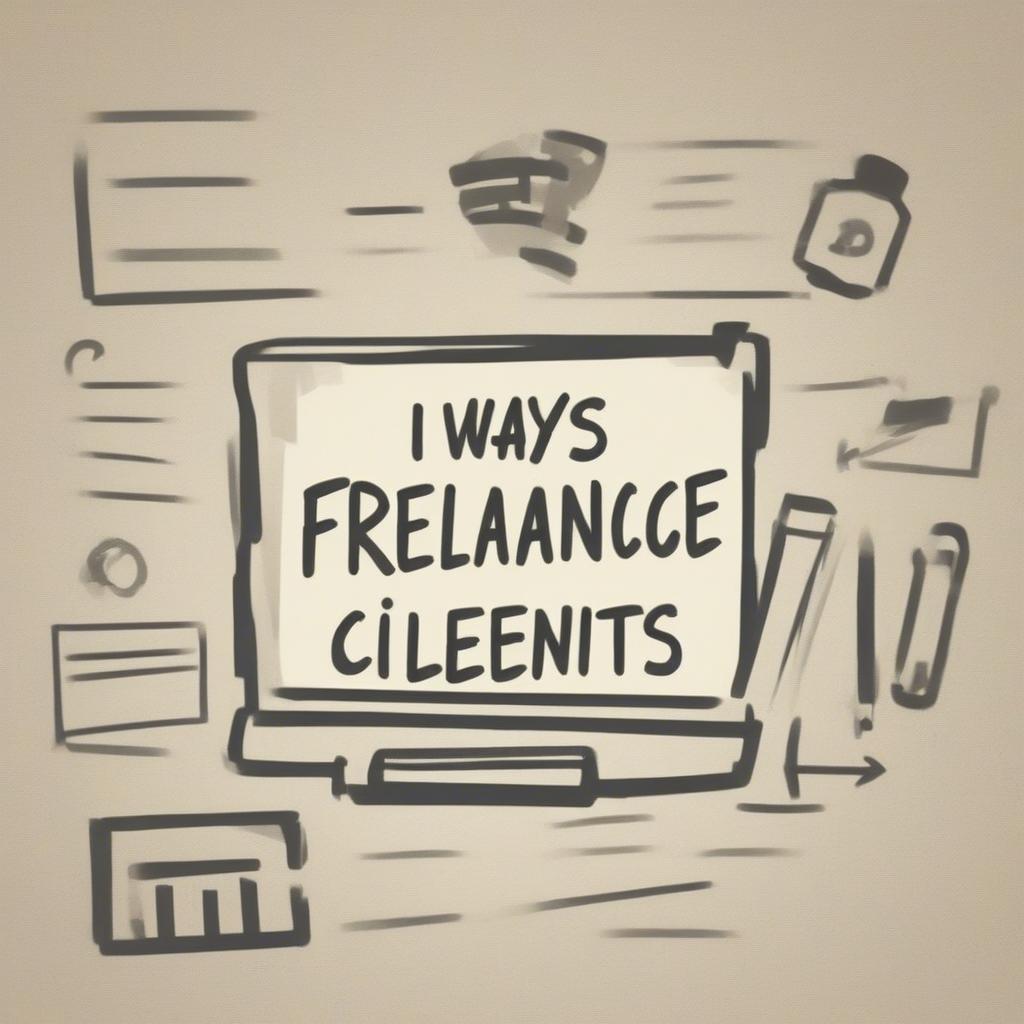
Okay, you’ve landed that dream freelance gig. You’re flexing your skills, creating amazing work, and the paychecks are rolling in. But here’s the truth: securing a client is only half the battle. The real challenge, and the key to a sustainable freelance career, lies in keeping those clients happy. Happy clients become repeat clients, loyal advocates, and the bedrock of your freelance empire.
This article dives deep into five essential strategies that go beyond just delivering quality work. We’ll explore the nuances of building strong freelance relationships, focusing on client satisfaction, and ultimately boosting your client retention rate. Forget the stress of constantly chasing new leads – let’s focus on nurturing the gold you already have.
1. Communication is King (and Queen!)
Let’s be honest, miscommunication is the silent killer of many freelance relationships. A simple email left unanswered can breed doubt, frustration, and ultimately, a lost client. Effective communication isn’t just about talking; it’s about listening, understanding, and responding thoughtfully.
Why Communication Matters for Client Satisfaction
Good communication fosters trust and transparency. When clients feel heard and understood, they’re more likely to be patient with hiccups and more willing to continue working with you long-term. It demonstrates that you value their business and are invested in their success. In short, excellent communication significantly boosts client satisfaction.
What Does Effective Communication Look Like?
- Prompt Responses: Aim to respond to client emails and messages within 24 hours, even if it’s just to acknowledge receipt. If you anticipate a delay, let them know beforehand.
- Proactive Updates: Don’t wait for clients to reach out. Keep them informed about project progress, potential roadblocks, and milestones achieved. This shows you’re on top of things and proactively managing their expectations.
- Clarity is Key: Use clear, concise language. Avoid jargon or technical terms that clients may not understand. Explain things simply and patiently.
- Active Listening: Pay close attention to what your clients are saying, both verbally and in writing. Ask clarifying questions to ensure you understand their needs and concerns.
- Preferred Channels: Identify your client’s preferred mode of communication. Some prefer email, while others prefer phone calls or video chats. Respect their preferences and communicate accordingly.
Practical Examples:
- Before Starting a Project: Set up a kickoff meeting or call to clarify project scope, expectations, and deadlines. Document everything discussed and share it with the client.
- During a Project: Send weekly progress reports, highlighting what you’ve accomplished and outlining your next steps. Don’t be afraid to ask questions and seek feedback throughout the process.
- Addressing Issues: If a problem arises, address it promptly and transparently. Explain the issue, outline your proposed solution, and keep the client informed every step of the way.
Template for Weekly Progress Report:
Subject: Project [Project Name] – Weekly Progress Update
Hi [Client Name],
Hope you’re having a great week!
Here’s a quick update on the progress of the [Project Name] project:
Accomplishments This Week:
- [List specific tasks completed]
- [List specific tasks completed]
- [List specific tasks completed]
Next Steps:
- [List planned tasks for the next week]
- [List planned tasks for the next week]
Challenges/Questions:
- [Mention any roadblocks or questions you have]
Please let me know if you have any questions or require further clarification.
Thanks,
[Your Name]
Communication Tools to Consider:
- Email: For formal communication and documentation.
- Project Management Tools (Asana, Trello, Monday.com): For tracking tasks, deadlines, and progress.
- Video Conferencing (Zoom, Google Meet): For face-to-face meetings and discussions.
- Instant Messaging (Slack, WhatsApp): For quick questions and informal communication.
By prioritizing open, consistent, and clear communication, you lay the foundation for strong freelance relationships and significant client retention.
2. Exceed Expectations (Without Burning Out)
Delivering quality work is the price of entry in the freelance world. But to truly wow your clients and ensure client satisfaction, you need to go beyond just meeting their expectations – you need to exceed them. This doesn’t mean working yourself to the bone, but rather finding small, strategic ways to deliver extra value.
Why Exceeding Expectations is Crucial
Exceeding expectations turns clients into raving fans. They’ll not only continue working with you but will also refer you to their network. This word-of-mouth marketing is invaluable for building a thriving freelance business and achieving higher client retention. It transforms you from being a service provider to being a trusted partner.
How to Exceed Expectations Strategically
- Under Promise, Over Deliver: It’s always better to set realistic expectations upfront and then exceed them. Avoid making promises you can’t keep.
- Proactive Problem Solving: Don’t wait for clients to point out issues. Identify potential problems early on and proactively offer solutions. This demonstrates initiative and expertise.
- Offer Additional Value: Look for opportunities to go the extra mile. This could be offering a complimentary service, providing insightful suggestions, or sharing relevant resources.
- Be Responsive to Feedback: Actively solicit feedback from clients and incorporate it into your work process. Showing that you value their input builds trust and demonstrates your commitment to improvement.
- Personalize the Experience: Take the time to understand your clients’ individual needs and preferences. Tailor your communication style and your services to their unique situation.
Practical Examples:
- If you’re a writer: Instead of simply submitting a draft, include a few bonus headline options or a brief analysis of competitor content.
- If you’re a graphic designer: Offer an extra variation of the design or provide a mock-up of how the design would look in a real-world setting.
- If you’re a web developer: Include a quick video tutorial explaining how to use the features you’ve built.
- If you’re a virtual assistant: Offer to create a simple task management template that streamlines their workflow.
Tips for Offering Extra Value Without Burning Out:
- Automate What You Can: Use tools to automate repetitive tasks, freeing up your time to focus on higher-value activities.
- Batch Similar Tasks: Group similar tasks together to increase efficiency and minimize context switching.
- Set Boundaries: It’s important to set boundaries and establish clear working hours. Don’t let your desire to exceed expectations lead to burnout.
- Focus on the 80/20 Rule: Identify the 20% of tasks that deliver 80% of the value and prioritize them accordingly.
- Say No When Necessary: Don’t be afraid to decline projects or requests that don’t align with your goals or capabilities.
Remember, exceeding expectations isn’t about working harder; it’s about working smarter. It’s about understanding your clients’ needs and finding creative ways to deliver exceptional value. This approach will significantly boost client satisfaction and solidify long-lasting freelance relationships.
3. Be Reliable and Consistent
In the freelance world, reliability is non-negotiable. Clients need to know that they can depend on you to deliver high-quality work on time and within budget. Consistency builds trust, strengthens freelance relationships, and leads to long-term client retention.
The Importance of Reliability and Consistency
Imagine hiring someone for a crucial project, only to find out they’re unreliable and inconsistent. They miss deadlines, communicate sporadically, and fail to meet basic expectations. This creates stress, frustration, and ultimately, a broken client relationship.
Being reliable and consistent means being a dependable partner that clients can count on. It builds confidence in your abilities and fosters a sense of security, which are critical for client satisfaction.
How to Demonstrate Reliability and Consistency
- Meet Deadlines: Adhere to agreed-upon deadlines and milestones. If a delay is unavoidable, communicate it promptly and propose a revised timeline.
- Consistent Quality: Deliver the same high level of quality with every project. Clients should be able to rely on consistent work, no matter the size or scope.
- Maintain Regular Communication: Communicate regularly with clients, providing updates and addressing any concerns. This shows you’re actively engaged and on top of the project.
- Be Available: Make yourself accessible to clients within reasonable working hours. Respond to messages promptly and be available for meetings when required.
- Follow Through: Keep your promises and follow through on your commitments. If you say you’ll do something, make sure you do it.
Practical Examples:
- Time Tracking: Use time-tracking tools to accurately estimate project timelines and stick to your schedule.
- Project Management Systems: Use project management tools to organize tasks, set deadlines, and track progress. Share project progress with your clients for increased transparency.
- Set Clear Processes: Establish a clear process for onboarding new clients, managing projects, and delivering final products.
- Create a Workflow: Design a clear workflow that outlines the steps you take from start to finish of a project. This helps in identifying bottlenecks and areas for improvement.
Tips for Maintaining Consistency:
- Develop a Schedule: Create a consistent daily or weekly schedule and stick to it. This helps in managing your workload and meeting deadlines.
- Use Templates: Create templates for recurring tasks and processes to save time and ensure consistency.
- Prioritize Effectively: Learn to prioritize tasks based on their importance and urgency. This helps in focusing on what matters most.
- Avoid Overbooking: Don’t take on more work than you can realistically handle. Overbooking can lead to missed deadlines and inconsistent quality.
- Regular Self-Assessment: Regularly assess your performance and identify areas where you can improve.
By making reliability and consistency a cornerstone of your freelance business, you’ll build strong, lasting freelance relationships and establish yourself as a dependable partner. This commitment to quality and reliability is a major driver of client retention.
4. Show Genuine Appreciation
It’s easy to get caught up in the day-to-day grind and forget the importance of showing genuine appreciation for your clients. A little bit of gratitude goes a long way in building strong freelance relationships and fostering client retention. Clients are not just paychecks; they are people who chose to trust you with their projects. Acknowledging and appreciating this is crucial.
Why Appreciation Matters
Showing appreciation makes clients feel valued and respected. It demonstrates that you’re not just in it for the money, but that you genuinely care about their business and their success. This creates a positive emotional connection, transforming a purely transactional relationship into a more personal and lasting one. Appreciated clients are happy clients, and happy clients lead to high client satisfaction and repeat business.
Ways to Show Appreciation
- Express Gratitude: Say “thank you” regularly. Don’t just say it in your invoice; express it in emails, calls, or even personalized notes.
- Acknowledge Referrals: When a client refers you to someone, make sure to acknowledge their referral and express your gratitude.
- Celebrate Milestones: Celebrate project milestones and accomplishments with your clients. Share in their wins and make them feel acknowledged.
- Personalized Gifts: Consider sending small, personalized gifts during the holidays or anniversaries of your working relationship.
- Offer Discounts or Bonuses: Offer occasional discounts or bonuses to your loyal clients to show your appreciation for their continued support.
- Ask for Feedback: Asking for and acting on feedback shows clients that you value their opinions and are dedicated to continuous improvement.
- Highlight their Success: Share positive feedback you’ve received about their project on your social media. This shows you’re their ally and want them to succeed.
Practical Examples:
- Thank You Notes: Send a handwritten thank-you note after a particularly successful project.
- Client Spotlight: Feature a client in your blog or newsletter, highlighting their success and achievements.
- Birthday Wishes: Send a personalized birthday card or message to your client.
- Holiday Gift: Send a small gift during the holidays as a token of your appreciation.
Tips for Showing Genuine Appreciation:
- Personalize Your Approach: Tailor your expressions of gratitude to your individual clients. Generic thank-you messages are unlikely to resonate deeply.
- Be Sincere: Your expressions of appreciation should come across as sincere and genuine. Don’t just go through the motions.
- Be Consistent: Show your appreciation regularly, not just when you need something from the client.
- Don’t Overdo It: While appreciation is important, don’t go overboard with lavish gifts or gestures. Focus on authenticity and thoughtfulness.
- Listen Actively: Truly listening to clients and acknowledging their feelings is a form of appreciation.
By making appreciation a regular part of your interactions with clients, you create a positive and supportive environment that fosters loyalty and long-term freelance relationships. The result is not just happy clients, but also higher client retention rates.
5. Invest in Your Business: Leverage Learn Business
All the strategies we’ve discussed so far will work wonders. But, as a freelancer, you’re also running a business. And every business needs tools, resources, and guidance to thrive. That’s where Learn Business comes into play.
How Learn Business Supports Freelancers
Learn Business is an invaluable resource for freelancers looking to streamline their operations, build stronger client relationships, and ultimately achieve greater success. It offers a variety of resources tailored specifically to the challenges and opportunities of the freelance world.
Here’s how Learn Business can help you:
- Professional Templates: Learn Business provides a wide variety of customizable templates, including contracts, invoices, proposals, and client onboarding checklists. These templates help you save time and present a polished, professional image to your clients.
- Guidance and Support: Access expert guidance on managing your freelance business, from pricing your services to marketing your brand. Learn Business offers tips and strategies that can help you grow and scale your business.
- Time Management Strategies: Discover and implement time management techniques to maximize productivity, prioritize work effectively, and meet deadlines consistently.
- Client Communication Enhancement: Improve your client communication skills with resources focused on clarity, active listening, and setting clear expectations.
How Learn Business can support client satisfaction and retention
By implementing the strategies suggested in Learn Business, you are well positioned to elevate your service delivery and maintain top-tier client satisfaction. The templates and guidelines provided directly improve your interactions with clients:
- Professional Contracts and Proposals: By using professionally designed contracts, you’ll clarify project scope, payment terms, and deliverables, minimizing potential misunderstandings and disputes.
- Streamlined Onboarding: The onboarding checklists will help you efficiently integrate new clients into your workflow, ensuring a smooth and positive start to your working relationships.
- Efficient Invoicing: By using professional templates, you’ll be able to generate invoices quickly and accurately, ensuring prompt payments.
Templates Available on Learn Business:
- Freelance Contract Template: Protect your interests and ensure clarity with a legally sound contract.
- Invoice Template: Create professional-looking invoices with ease.
- Project Proposal Template: Present a clear and compelling proposal to potential clients.
- Client Onboarding Checklist: Streamline the process of onboarding new clients.
- Email Templates: Save time and communicate professionally with pre-written email templates.
How to integrate Learn Business into your freelance journey
- Explore the Resources: Take the time to explore the various resources available on Learn Business. Familiarize yourself with the templates, guides, and articles relevant to your business.
- Customize Templates: Adapt the templates to your specific needs and brand. This ensures that you present a consistent and professional image to your clients.
- Implement Best Practices: Incorporate the best practices and strategies recommended by Learn Business into your daily operations. This can significantly boost your efficiency and productivity.
- Stay Updated: Regularly check for new resources and updates on Learn Business. Continuously strive to improve your skills and knowledge.
By leveraging the resources and guidance provided by Learn Business, you’ll be well equipped to elevate your freelance business, build even stronger freelance relationships, and achieve higher rates of client retention. It will help you to be more professional, organized and deliver even more value to your clients.
The Bottom Line: Happy Clients = Thriving Freelance Business
Keeping freelance clients happy is not just about delivering quality work; it’s about building strong, lasting relationships based on trust, communication, and mutual respect. By implementing these five strategies – prioritizing communication, exceeding expectations, being reliable and consistent, showing appreciation, and investing in your business with resources like Learn Business – you’ll not only see a surge in client satisfaction but also achieve higher client retention, which is the key to sustainable success in the freelance world.
Remember, your clients are the lifeblood of your business. Nurture those relationships, and your freelance career will flourish. The journey to success isn’t a sprint; it’s a marathon of building lasting partnerships. By prioritizing these elements, you are not only keeping clients happy, you are building a solid foundation for a prosperous and satisfying freelance career. Now go out there and make your clients not just happy, but your biggest fans!



Leave a Reply